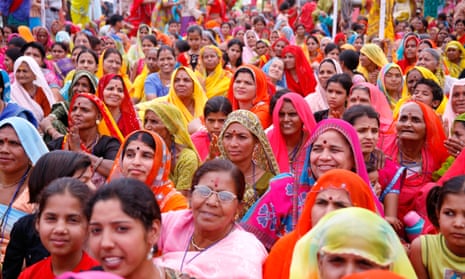1. Challenge banks’ misconceptions about women’s needs
How do you show them that cosmetic changes to a product aren’t enough, that there is a benefit to serving women, and the facts and figures are there to build a business case for women? We’ve organised field trips for bank staff to meet women customers in rural areas so they can see for themselves these women have pertinent questions about personal finance and that their need is real. Saloni Korlimarla, director, mobile technology programme, Cherie Blair Foundation for Women, London, UK @salonikor
2. Work around legal, social and cultural barriers
Women have low financial independence in many economies. For example, starting a business in a developing country often requires a visit to a major city centre; but in many countries it is difficult for a woman to travel freely. In 155 countries, there’s also at least one law impeding women’s economic opportunities - in the DRC and Niger, women need their husband’s permission to open a bank account, in Pakistan, to apply for a national ID card. India’s reform of the Hindu Succession Act and Ethiopia’s reform of the family code show removing legal constraints make the most difference in the long-term, but what other things can we do in the short-term? Rosita Najmi, programme officer, Bill & Melinda Gates Foundation, Washington DC, USA @RositaNajmi @gatesfoundation @gatespoverty
3. Don’t leave women’s rights campaigns to activists alone
We need a sector wide change in approach here - banks and the private sector should help lobby for women’s rights too. At UNCDF we’ve developed a new shift and empower programme to address the long term causes of financial exclusion e.g. land rights Veena Krishnamoorthy, women’s economic empowerment consultant, United Nations Capital Development Fund (UNCDF) and Better Than Cash Alliance, New York, USA @veenakmoorthy
4. Remember that market research is not optional
What are the unique places where women drop off the mobile financial services customer journey? While some women’s needs will be universal, in different communities, the women will have unique needs and preferences. From development professionals to bankers to policymakers, we must remember that understanding the people we seek to serve is an essential first step. Karen Miller, chief knowledge and communications officer, Women’s World Banking, New York, USA @womensworldbnkg
5. Link financial products to property rights
In Africa we see women losing their property or entering into disputes with in-laws when their husband dies. What if loans for land purchases, home purchases, or construction materials specified the inheritance and property rights for these assets, and even formalised women’s property ownership? Caitlin Sanford, director, consumer insights, Bankable Frontier Associates, Boston, USA @caitlinsanford
6. Employ more women in financial services
In certain markets, women clients will feel more comfortable interacting with a female banking agents, but that’s not the case everywhere. What’s also important is a real commitment to serving women clients at all levels of the institution and promoting gender diversity among staff, including at leadership levels. Banks in developing countries should also consider what’s holding women back from joining the workforce e.g. fear of theft for banking agents who have to travel a lot. Karen Miller
7. Involve men
I think its important that when we talk about empowering women, we should be clear that this does not equal demonising men. For example, when we found in our Rwanda VSLA programming that the impact of VSLAs on gender based violence was not as much as we hoped, we developed a more gender sensitive VSLA manual to ensure that men are engaged throughout the process. We’ve gone onto start engaging “male champions” in our programmes to support with community sensitisation around women’s empowerment also. Katherine Hughes, financial Inclusion Advisor (Asia), Care International UK, London, UK @careintuk @khughes123
8. Invest in customer relationships
Whether using mobile transactions, or cash, to increase women’s access to and usage of financial services, establishing trust with customers is key. This could mean good customer service, an effort to understand client financial behaviour and decision-making. Isabel Whisson, communications and knowledge management officer, microfinance programme, Brac, Dhaka, Bangladesh @IsabelWhisson
9. Change the credit score model
The financial services sector can play a key role in developing alternative credit scoring models to address the reality that many women lack a history of formal financial transactions. They should also leverage new technologies such as biometrics and using visual cues rather than words on mobile wallets that can help with low literacy. Veena Krishnamoorthy
10. Recognise different needs when developing services
Not all women’s needs are the same. A range of banking options need to be available for the girl who needs access to finance to pay for vaccines and school fees, the bride struggling to finance a wedding and dowry, the mother seeking to provide nutritious food, and the grandmother who uses remittances across her family and social network. Rosita Najmi
11. Take a ‘two pronged’ approach
Our priority is to address the gender gap from both ends - by building the capacity of women themselves to interact with banks and manage their finances (through financial literacy workshops), and on the other hand working with banks to ensure that they are offering the most relevant, desirable products to the women using the effective delivery channels to ensure long-term sustainability for these products. Saloni Korlimarla
Read the full Q&A here.
Join our community of development professionals and humanitarians. Follow@GuardianGDP on Twitter.

Comments (…)
Sign in or create your Guardian account to join the discussion